Visible Progress, Your Own Training
Running is something that requires long-term accumulation. Often, it's not that you don't know how to run, but that you lack a tool that can run with you and help you see the direction of your progress.
This is what PaceGuru wants to do: make your training visible to yourself, and make your training plan truly yours.
Visible Data: Better Data, Better Companionship
What PaceGuru does is simple—turn complex data into charts that you can understand at a glance, letting you know how you're improving.
30-Day Running Data: Volume is the Foundation of Everything
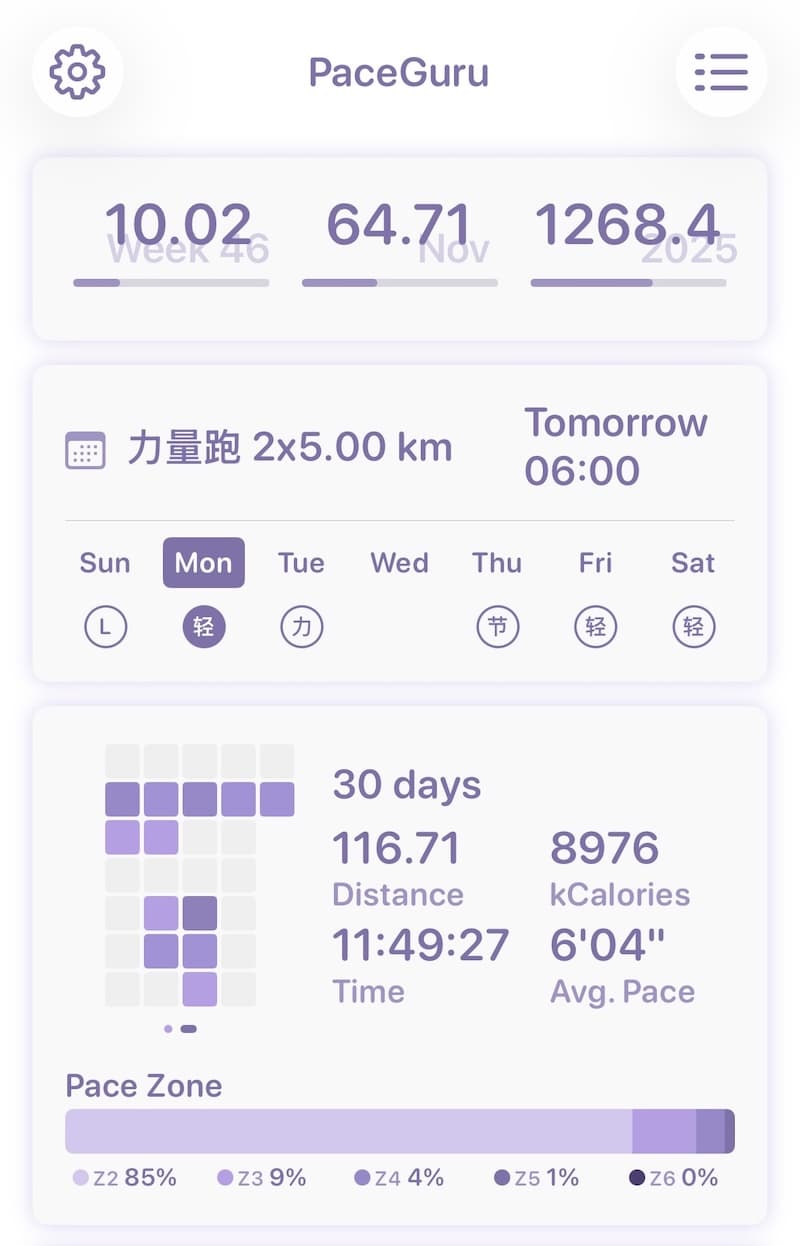 Although PaceGuru also displays weekly, monthly, and yearly running volume data, we place more importance on the past 30 days of data. We don't want you to spend a month accumulating running volume from scratch, but rather be able to plan every day to maintain your 30-day volume at the level you want.
Although PaceGuru also displays weekly, monthly, and yearly running volume data, we place more importance on the past 30 days of data. We don't want you to spend a month accumulating running volume from scratch, but rather be able to plan every day to maintain your 30-day volume at the level you want.
Hexagonal Ability Radar Chart: Training Distribution at a Glance
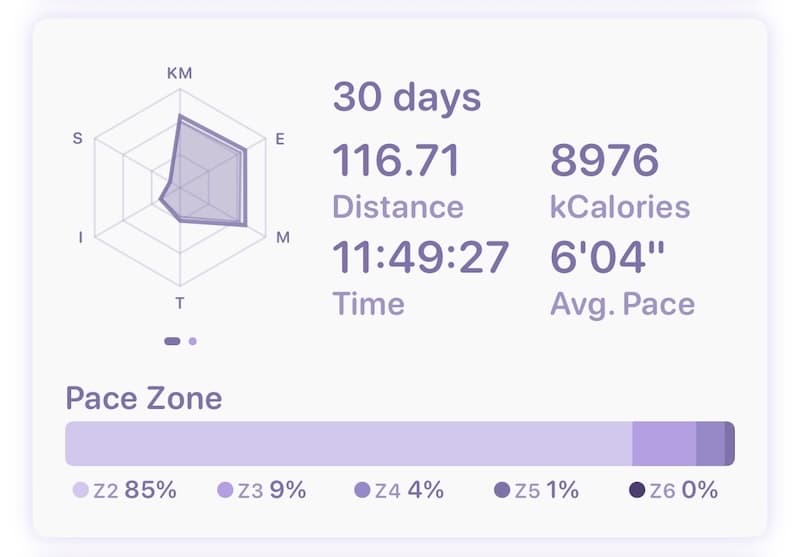 Have you heard that easy runs should account for more than 75% of total running volume? Are you curious about what capacity other intensity zones should reach, and what state your own structure more closely resembles?
Have you heard that easy runs should account for more than 75% of total running volume? Are you curious about what capacity other intensity zones should reach, and what state your own structure more closely resembles?
We designed a hexagonal radar chart to display this data. You can set the proportion of different training zones within 30 days according to your training goals, and we'll calculate the completion status.
If you can fill the entire hexagon, congratulations, you've completed the plan you set for yourself.
Training Trends: Various Training Data Curves from the Last 30 Workouts
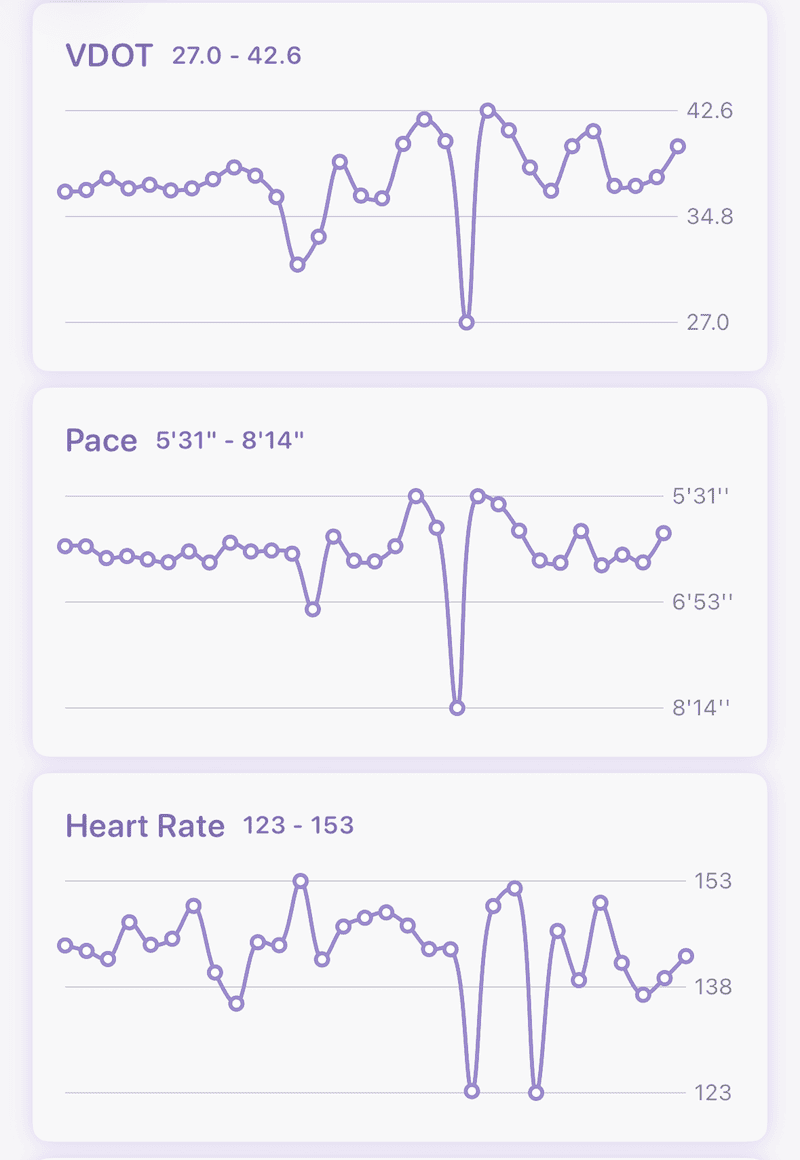 Day after day of training, do you want to know how your various training indicators are trending?
Day after day of training, do you want to know how your various training indicators are trending?
When I was checking the training details page data, I really wanted to compare how it differed from previous training sessions.
So we've put metrics like cadence, pace, heart rate, VDOT, flight height, etc., together to view their changing trends.
Details Page: Continuously Enriching Running Data
 In the details page, we've compiled the key data from a single run. You can see the complete route, pace curve, heart rate changes, power, cadence, ground contact time, and other core indicators, letting you know if this run was stable, tiring, or if your rhythm fell apart. Segment data can help you see your condition in each kilometer, while zone distribution tells you what type this training really belonged to—aerobic, marathon pace, threshold, or others.
In the details page, we've compiled the key data from a single run. You can see the complete route, pace curve, heart rate changes, power, cadence, ground contact time, and other core indicators, letting you know if this run was stable, tiring, or if your rhythm fell apart. Segment data can help you see your condition in each kilometer, while zone distribution tells you what type this training really belonged to—aerobic, marathon pace, threshold, or others.
We'll continuously update and add more useful data to give you a more multi-dimensional understanding of your training.
Widgets and Watch Faces: Training Always by Your Side
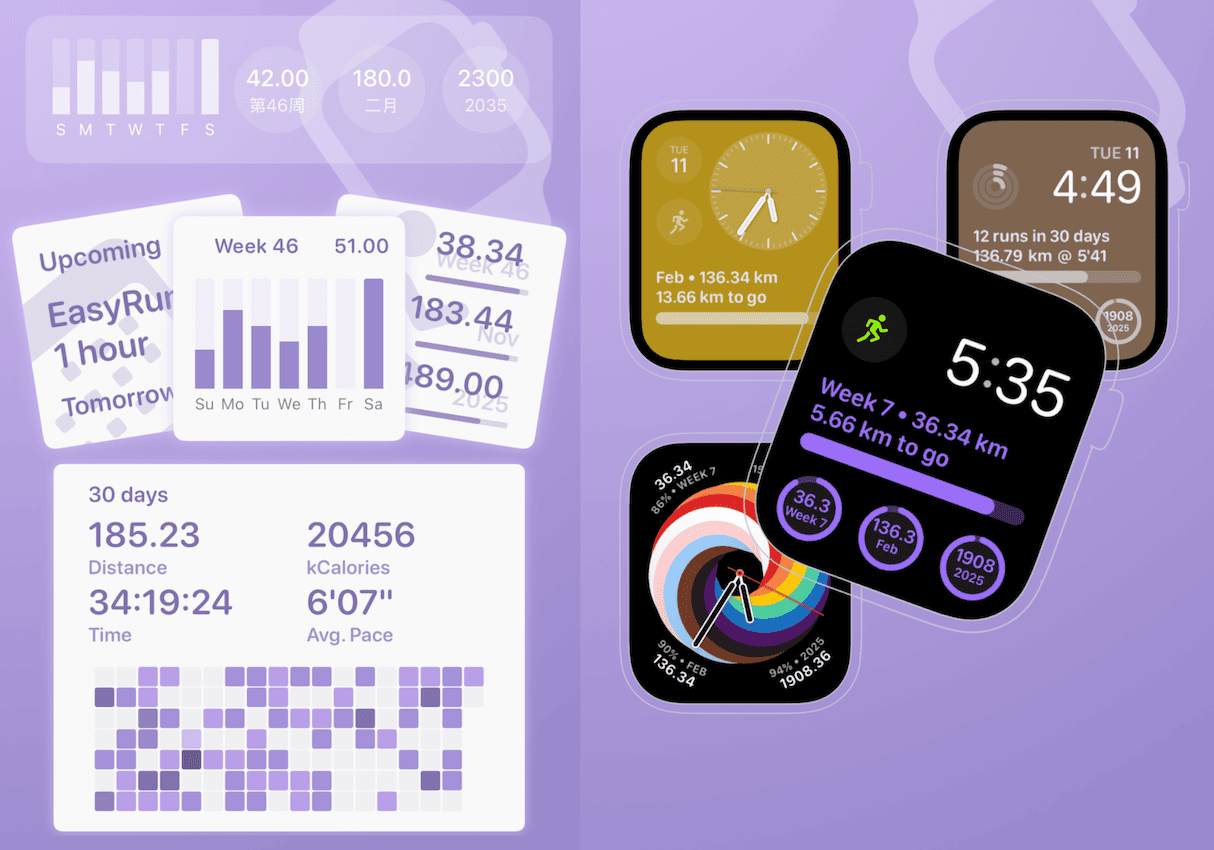
This week's, this month's, this year's running volume, 30-day volume, next planned training—visible at a glance.
In widgets and watch faces, configure and use this data so that every time you look at your screen, you see your athletic performance and training progress reminders.
Your Own Training: Personalized Plans, Self-Directed
PaceGuru's training plans emphasize "runner-led."
The plan is decided by you, the App provides professional training logic, making it easy for you to execute.
Plan Training Based on Your Own Pace and Heart Rate Zones
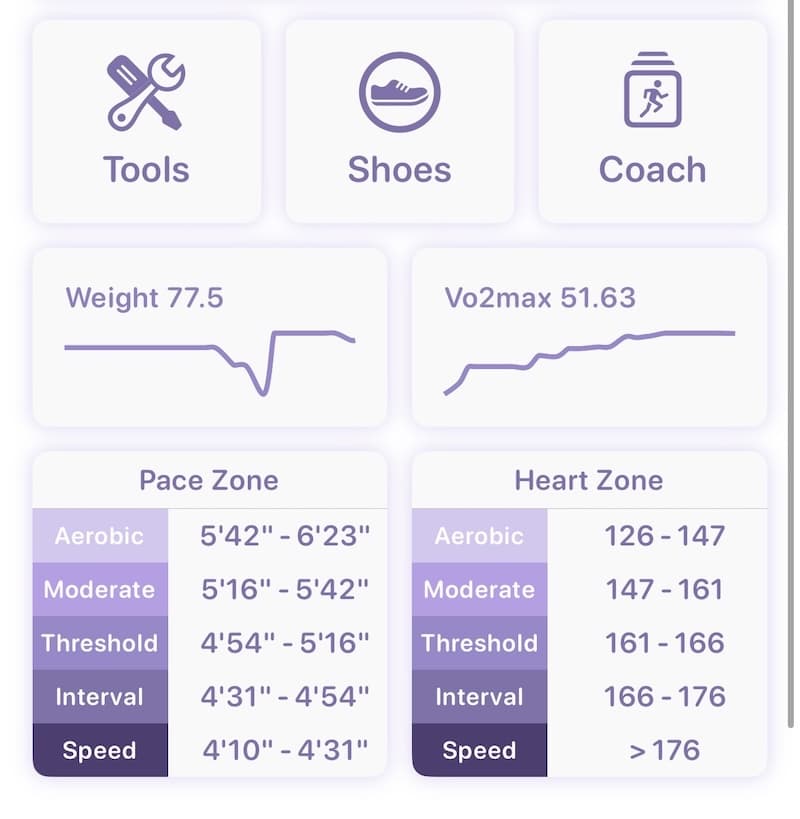 When you first start PaceGuru, it will have you set your heart rate zones and pace zones. We use resting heart rate and maximum heart rate to calculate meaningful heart rate zones, and use easy run pace to estimate pace zones.
When you first start PaceGuru, it will have you set your heart rate zones and pace zones. We use resting heart rate and maximum heart rate to calculate meaningful heart rate zones, and use easy run pace to estimate pace zones.
When creating training plans, we encourage you to choose different zones for training based on your training goals.
The reason running training needs to be divided into zones is because different intensities stimulate completely different abilities in the body.
Some training makes you run longer, some training makes you run faster, some training helps you maintain pace even when fatigued.
From low-intensity aerobic to threshold to anaerobic, each zone has clear physiological goals, for example: — Low-intensity running increases mitochondria, improves endurance base — Threshold running enhances lactate clearance capacity — VO₂max intervals strengthen cardiopulmonary and oxygen-carrying capacity — Speed endurance training prevents you from slowing down in the final stages of a race
Single Ability Improvement Plans: Train Your Weaknesses
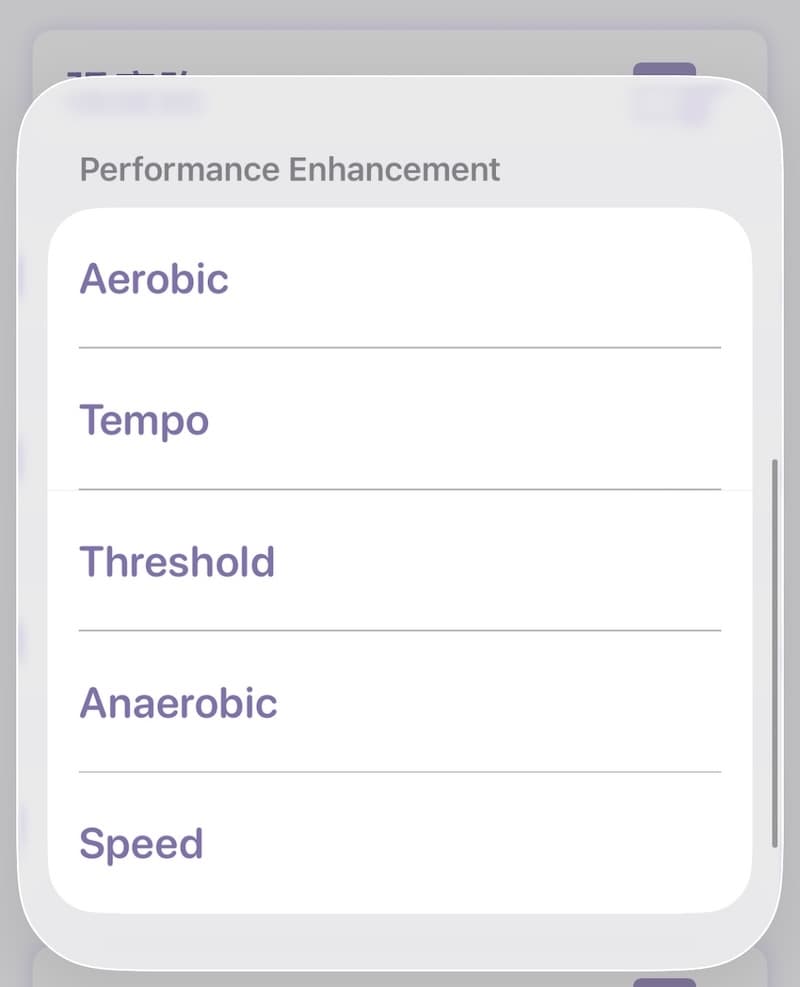 Of course, different zones also have different training methods. Aerobic training mainly controls overall duration, while high-intensity threshold and interval training mainly controls interval time and pace.
Of course, different zones also have different training methods. Aerobic training mainly controls overall duration, while high-intensity threshold and interval training mainly controls interval time and pace.
If you're not sure how to set it up, PaceGuru provides training templates. You can choose training templates based on your goals.
Templates automatically generate training plans for you based on your goals and training intensity.
Training Templates: Generate Classic Running Training Plans
 In addition to templates, PaceGuru also provides classic training plans like Yasso 800s, progression runs, fartleks, etc. You can view their training goals and use our templates to easily generate training plans.
In addition to templates, PaceGuru also provides classic training plans like Yasso 800s, progression runs, fartleks, etc. You can view their training goals and use our templates to easily generate training plans.
Enrich your daily training and progress happily.
Hansons Plan: Automatically Generate 18-Week Marathon Training
If you're preparing for a marathon, PaceGuru offers the Hansons Marathon Plan.
 You only need to input the race date and target time.
You only need to input the race date and target time.
The App can automatically generate a complete 18-week training plan, including aerobic, tempo, long distance, speed training, etc., with a structure that follows the Hansons' cumulative fatigue principle.
(Of course, you should search online to learn about the Hansons plan and see if it's suitable for you)
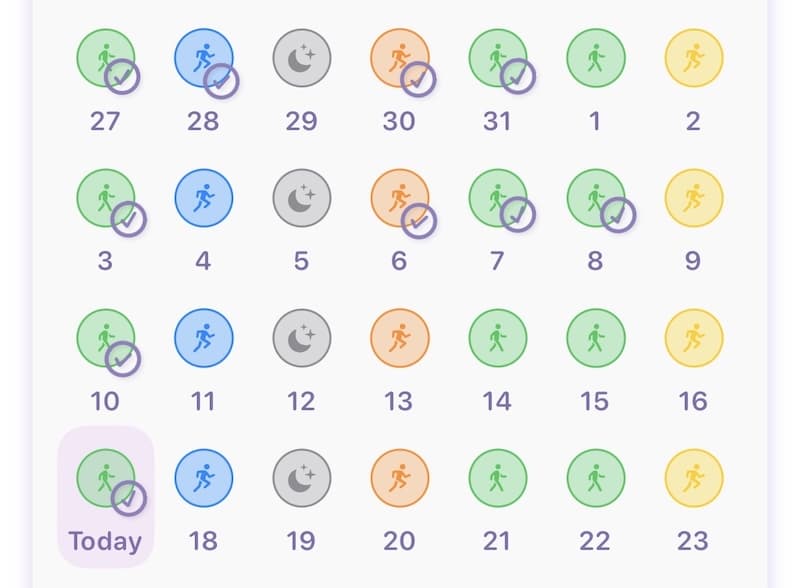
Automatic Plan Sync, Training Preparation Notifications
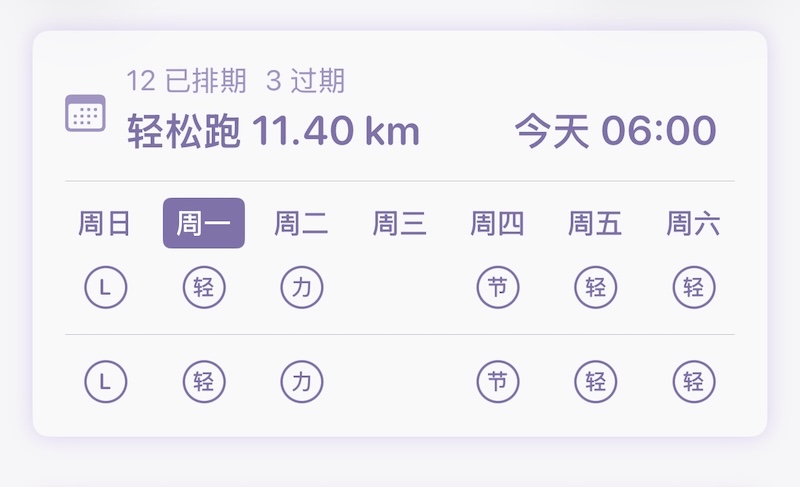
All training plans can be scheduled and synced to Apple Watch as needed.
The night before training begins, the App will automatically notify you about tomorrow's training.
And when you step onto the starting line, raise your wrist and open the training app on Apple Watch, and you'll see the day's training already set up—one click to start.
Make Training a Visible Journey
PaceGuru doesn't want to be just another "running tool that piles on charts," nor does it want to create a generic plan of uncertain correctness for you to blindly follow—running should be an enjoyable activity.
What we want to do is:
A running companion that lets you see your training structure, maintain your sense of direction, and grow at your own pace.
If you're on the road of running, I'm delighted to run alongside you.